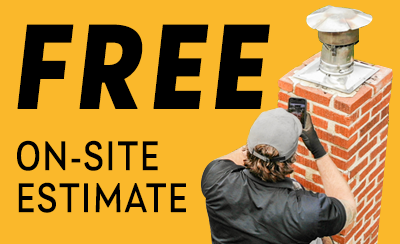Avoiding Winter Chimney Fires: Crucial Prevention Tips
Now that there is winter’s chill in the air, you’re probably using your fireplace more, which, in turn, your chimney gets more use. What’s the significance of that? It means your chimney is at a higher risk of a fire occurring. Don’t let that worry you; we can help. Here is a handy guide- Avoiding Winter Chimney Fires: Crucial Prevention Tips.
 How to Avoid a Chimney Fire
How to Avoid a Chimney Fire
Be on the Lookout for Soot and Creosote
Soot and creosote are produced when you burn logs in your fireplace. Once soot and creosote blanket your chimney walls, it is at greater risk of a fire flaring up by a floating ember.
Install a Stainless-Steel Chimney Liner
It’s easy: a steel chimney liner is much less hazardous. Why? Because stainless-steel can resist higher temperatures and has less potential to catch fire. A steel liner also keeps carbon monoxide from finding its way into your home. A skilled chimney sweep service can install a stainless-steel chimney liner in chimneys that don’t have one.
Attach a Chimney Cap
Believe it or not, a chimney cap is a fire preventative. It keeps leaves, pine cones, pine needles, acorns, and other like items from infiltrating your chimney. It also guards your chimney against water damage by keeping snow, sleet, hail, and rain from getting inside.
Look for Wildlife
Your chimney may seem like the perfect winter residence for local wildlife in your neighborhood, seeking warmer temperatures in colder weather. Nests can obstruct your chimney and catch fire when an ember touches it. Nests can cause a blockage that forces carbon monoxide and other gases back into your home instead of going up the chimney.
Burn Hardwood
Using hardwood in your fireplace will produce less creosote and, therefore, reduce the chance of a chimney fire occurring. Hardwoods may not be cheap, but the lower chance of a chimney fire breaking out is worth the cost.
Employ a Chimney Sweep Service
A certified chimney sweep service will inspect and clean your chimney, guaranteeing no creosote or soot buildup in the flue or interior. They can confirm there are no breaches in your chimney liner that could start a house fire or lead to carbon monoxide penetrating your home. After the inspection is completed, the chimney sweeps will give you a written quote before they move forward with any required repairs. You should have your chimney inspected and cleaned annually to confirm that there is less risk of a fire and that it is in ideal condition for sustained burns in your fireplace.
What Are Some Warning Signs of a Chimney Fire?
There are several common signs of a fire igniting in your chimney.
- Heavy smoke belching from your fireplace and home.
- Audible cracking and popping sounds from inside your chimney.
- A hot, burning smell coming from inside the chimney.

If you experience a chimney fire, call 911 right away to ensure the fire is doused and doesn’t spread. Be sure to put safety first. Never leave your home while a fire is burning, and put fire detectors and carbon monoxide detectors approximately fifteen feet away from your fireplace.
Let Felgemacher Fireplace Remove Creosote from Your Chimney
If it’s been a while since your chimney was cleaned, you are at risk of a fire. Don’t try to clean it; call us right away. If you reside in the wider Buffalo, NY, Rochester, NY, or Charlotte, NC, areas, call 716-482-1820, and one of our experienced chimney specialists will be glad to discuss inspecting and cleaning your chimney.





